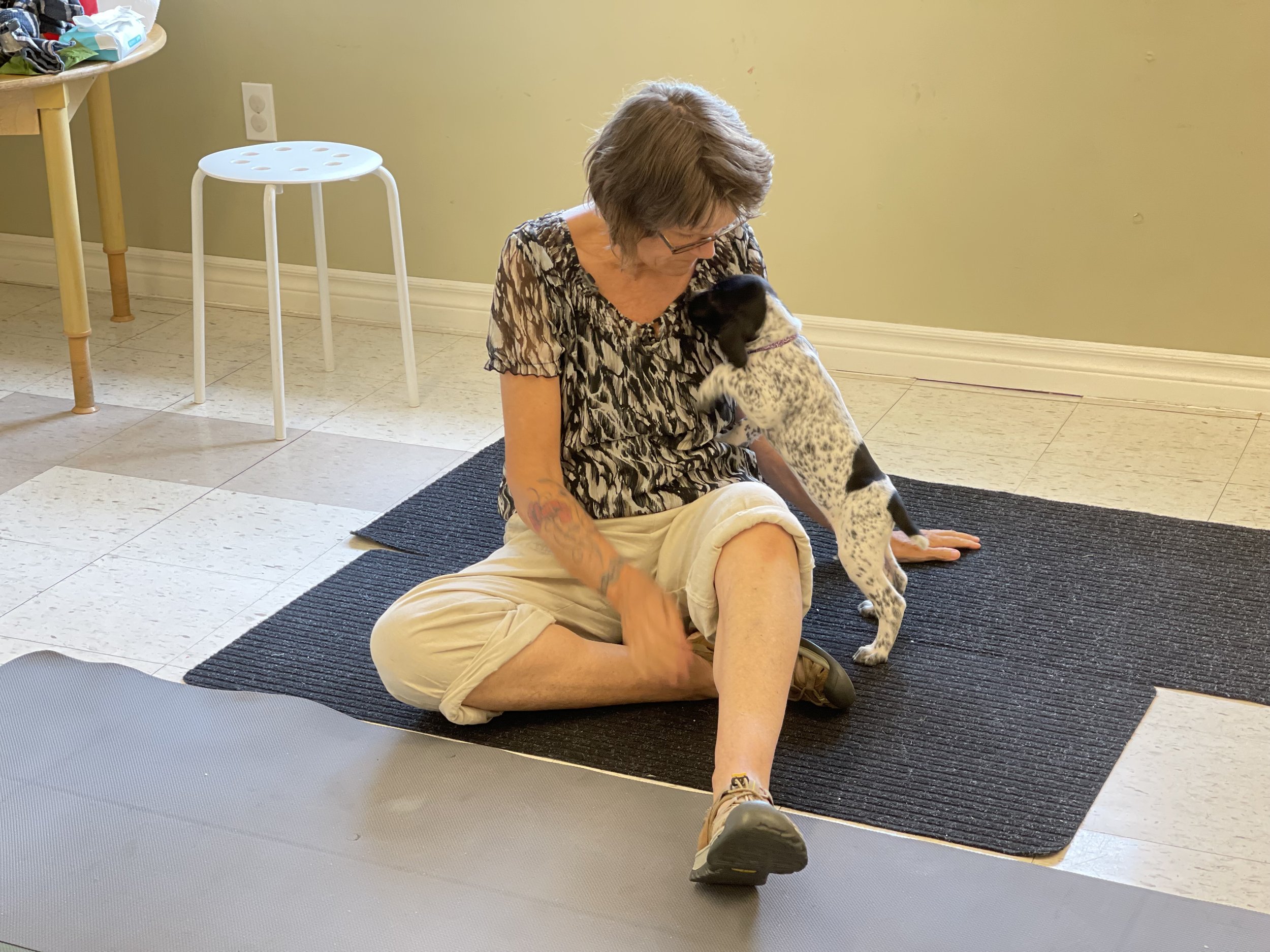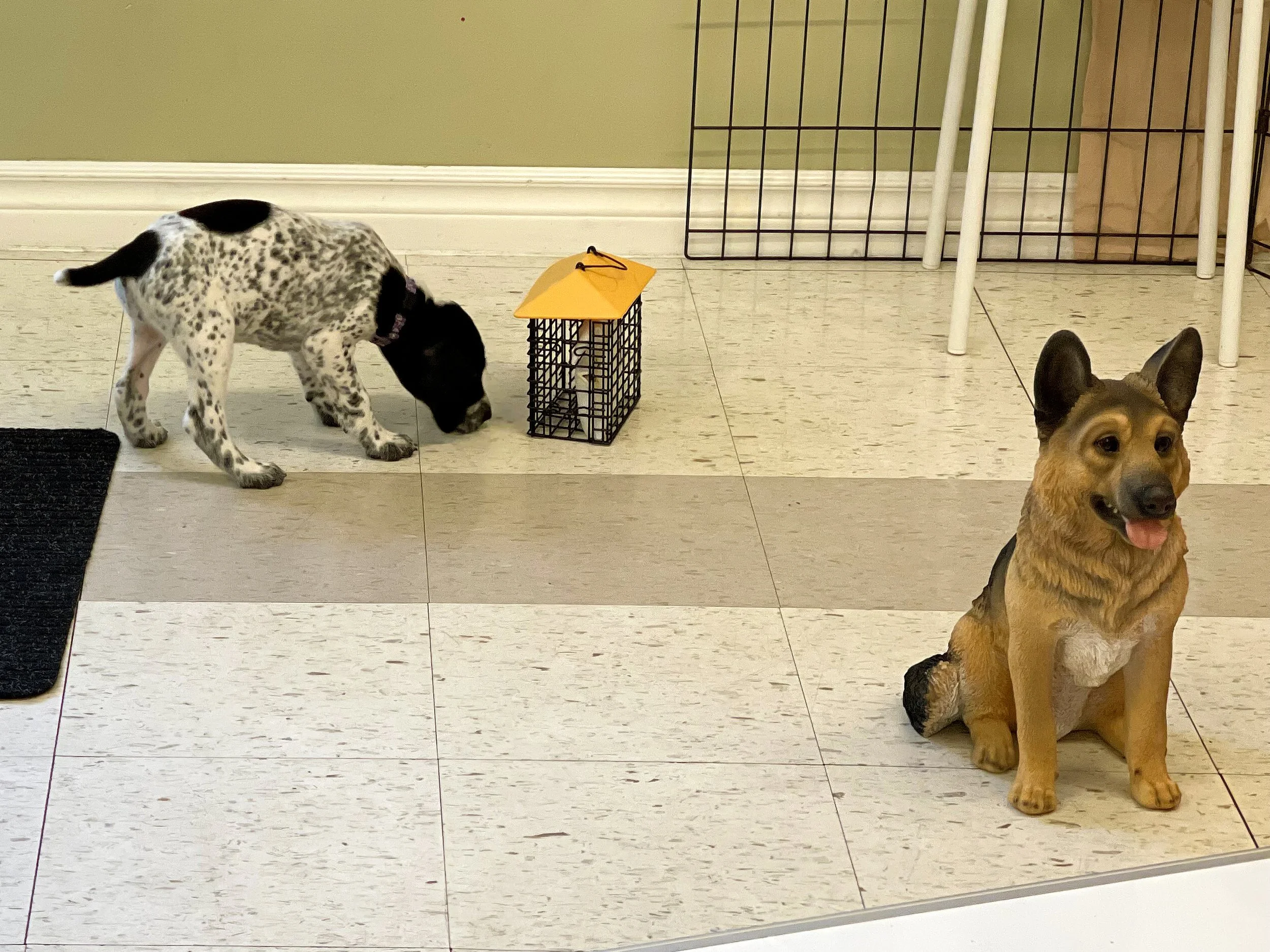Temperament Testing: A Tool for Matching Puppies & Families
A few years ago I temperament tested a litter of our puppies, and there was one little girl who really stood out for me. She was very sweet, fairly confident in some situations but not others and super strong in a number of traits that would make her a good match for a few of our families. She was weak in a couple of other traits that would require the family who was matched with her to commit to some targeted training and socialization measures with her. As I always do in these situations, I reached out to a family on our wait list who I thought would be game and was a good match for her, but I wanted to make sure they were up to the challenge. They were up to the challenge with Zoey and they have never looked back!
Generally speaking, a temperament test is a way to evaluate a puppy’s reaction to various situations, sounds, sights etc. in a controlled test environment. This exercise not only helps us predict the puppy’s future adult traits, but also helps us make decisions on families that will be a good fit with the puppy.
I’ve posted about temperament-testing our puppies on social media and I’ve had a range of feedback to those postings. Some have asked if it really tells us anything about the puppies, some have said they think it’s a gimmick while others are curious about how it works. Hopefully this blog answers questions about the testing system we use as well as the why, when, where, how and who questions!
“We welcomed Zoey into our family with open hearts and were so happy to know that Emily and Rob incorporated temperament testing to match their puppies to hopeful families. Having this extra step gave us comfort to know we would receive a puppy that was matched to our home, family and each others’ needs (both Zoey and us). Zoey ended up being a perfect match and addition to our family and we are so grateful for Stannyfield’s care and efforts with all the steps they take to ensure a good fit.
”
A Bit of Background
Early in our journey as breeders we tried various temperament testing systems but the lack of detail and training for breeders on how to evaluate puppies and interpret results made them ineffective, at least for us. Because of this I never felt we had reliable information upon which to base our puppy-family matching decisions and our observations of the puppies from approximately three to eight weeks old were primarily what we relied on. While our observations did (and still do) give us insight, identifying a more evidence-based and data-driven approach when matching puppies with families as well as providing a better understanding of their puppy’s behaviour became a priority for us. We joined Avidog around this time and this brought us the APET (Avidog Puppy Evaluation Test) with an in-depth focus on understanding how to use the test and interpret the results. Founded by Gayle Watkins of Gaylan’s Golden Retrievers fame, Avidog was a truly welcome and cherished resource, offering evidence-based breeder education, which included the APET (see footnote 1 below).
Important Elements of the Test: Novelty is Key
When should we temperament test our litter?
According to the APET resource materials, it really depends on the typical maturity of a given breed at certain stages in their development, however, no breed is likely to be mature enough prior to 49 days old. We have found that between seven and seven and a half weeks old is appropriate timing to conduct our APETs for our breeds.
Who is involved?
We generally ask good friends to help us temperament test our litters and one of these friends must be a stranger to the puppies. When the puppies are whelped or even prior to that, our tester graciously agrees not to meet them prior to the test, so no visits to Stannyfield when we have puppies on the ground. Additionally, we have one to two observers who record data during each puppy’s tests as well as a runner/puppy caregiver, a role usually enjoyed by Rob.
Puppy Waiting Pen
Where do we test?
Because another important element to the test is a location that is new to the puppies, we usually go off-site and rent a hall for our testing. Inside the hall we set up a testing area that is completely separated from the puppy waiting pen so that the puppy being tested cannot see or access their littermates in any way (visually or physically). The test space includes the tester and a number of objects and obstacles that the puppy has never encountered before, strategically placed throughout the test area.
“The match between puppy and owner is essential for the long-term success of their relationship”
The Data
People Data
Throughout the various steps in our screening process and then after a family joins our wait list, we focus on developing key pieces of information about our prospective puppy owners. This includes a family’s goals for their puppy, family structure, type of dwelling, dog experience, other animals in the household and more. This information becomes one of the data sets we work with when matching puppies with families and is entered into our evaluation spreadsheet.
Puppy Data
The other data set is built upon each puppy’s individual APET results. Once the testing is complete, I take the raw data and information gathered, enter it into our evaluation spreadsheet and develop a trait profile for each puppy that provides clarity on the type of new owner a puppy would likely thrive with, and we can then compare this puppy data to the profiles we’ve developed on each family.
Tying It All Together
Because some traits are dynamic, meaning they can be influenced by training and socialization, and other traits are relatively static throughout a puppy’s life, knowing which set of static and dynamic traits each puppy exhibited during their test is invaluable to not only the matching process, but to the new owner as they embark upon their puppy raising journey. For this reason, we go one step further and write a report for each puppy owner that gives an overview of their puppy’s APET, as well as suggestions for where to focus their puppy training efforts. While no puppy is perfect and no puppy trait profile is 100% perfect for an owner, we do our very best to make excellent matches. Providing our owners with this extra bit of information about their puppy can do even more to set them up for success.
We love the depth of data that results from a well-conducted APET. It is built upon 23 different exercises that evaluate 33 different traits. Every test we conduct hones our skill to not only effectively move a puppy through each exercise, but also observe that puppy’s behaviour during the test, record it and importantly, interpret and translate that information. All of this gives us the ability to successfully match puppies with families and recommend areas of focus for socialization and training. We will continue to use the APET as our testing system in the years to come to bring value and benefit to both our puppies and their owners.
[1] Avidog was sold and is no longer available to Canadian breeders, but some or all Avidog education materials are still available in the U.S through Good Dog.





